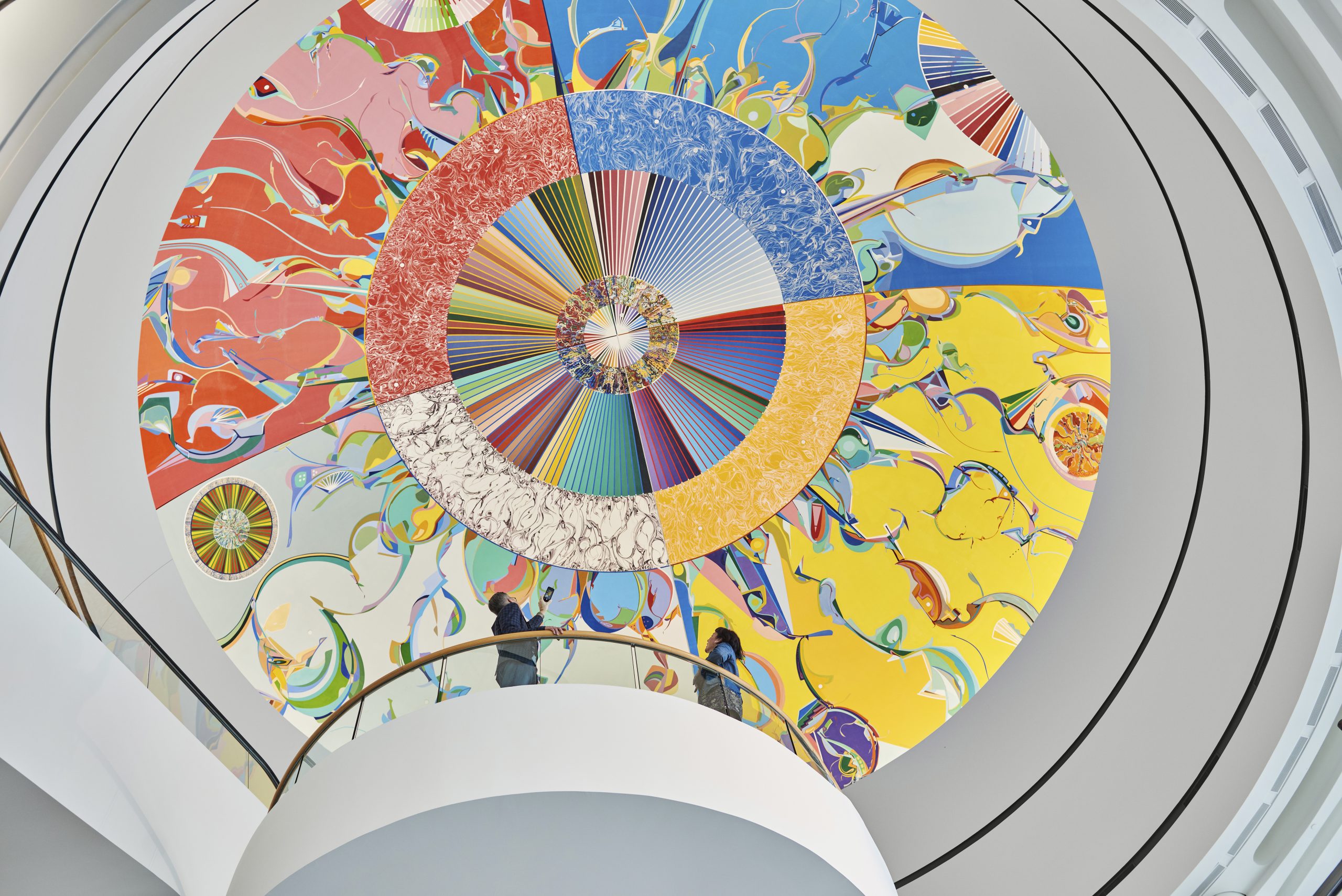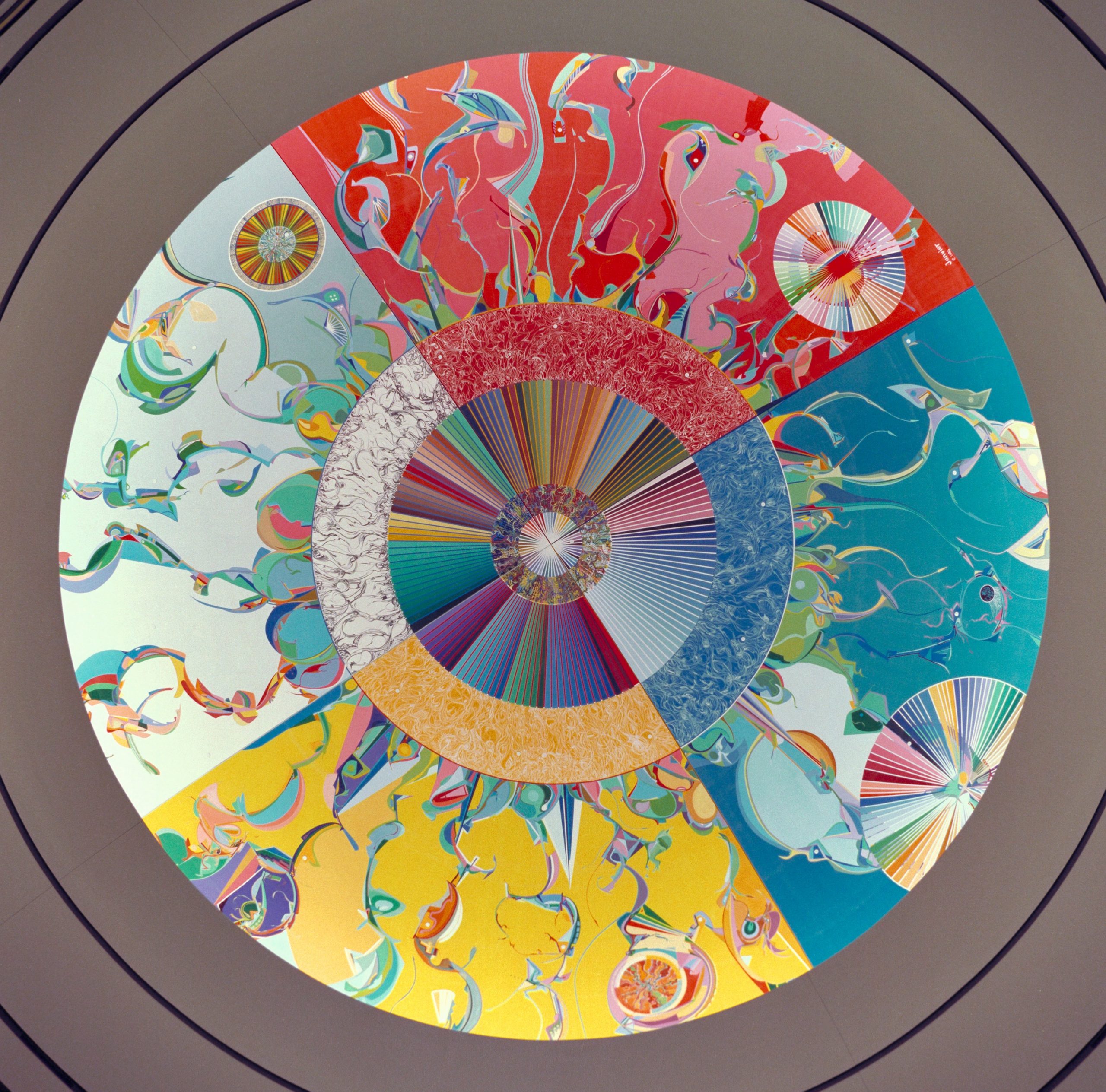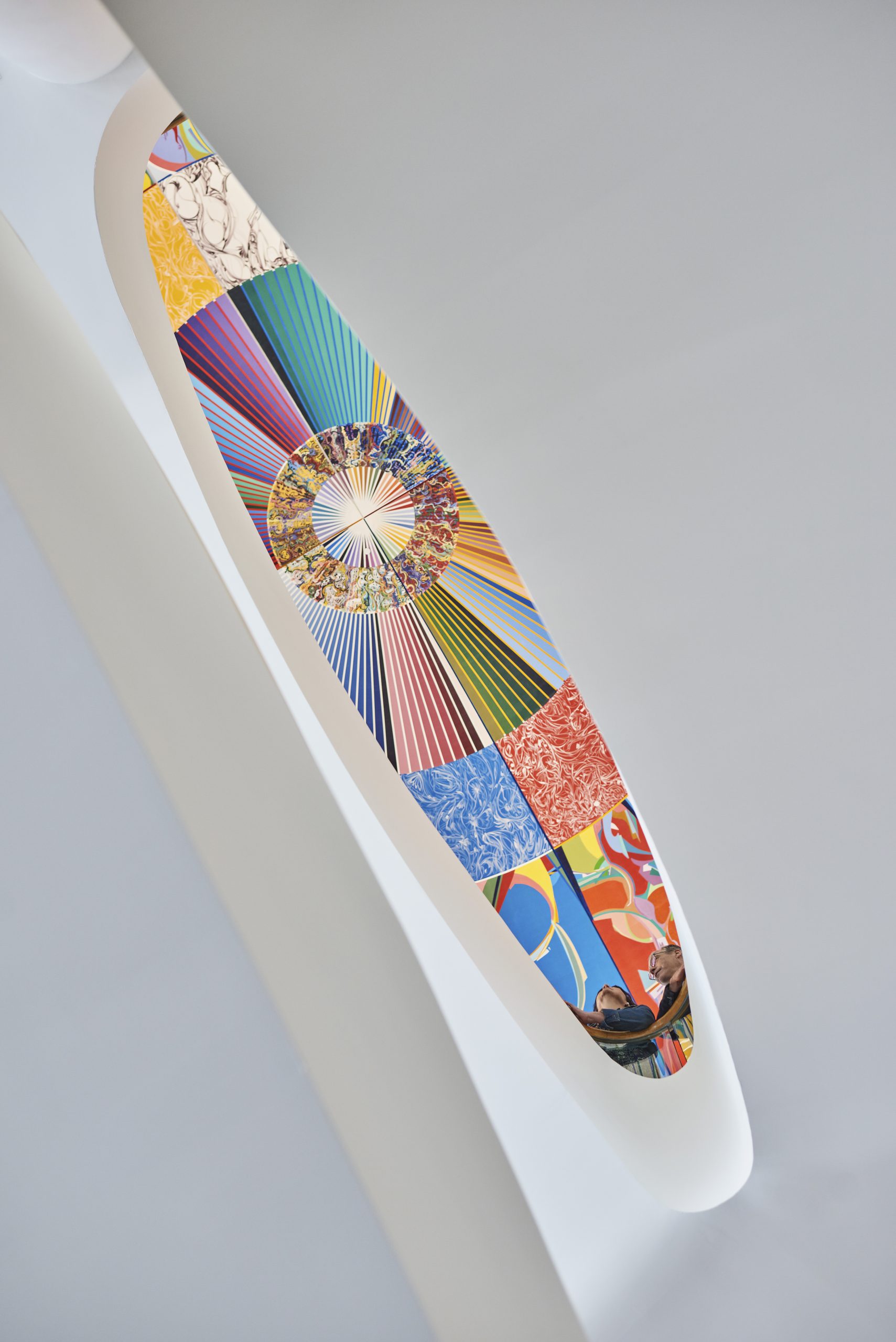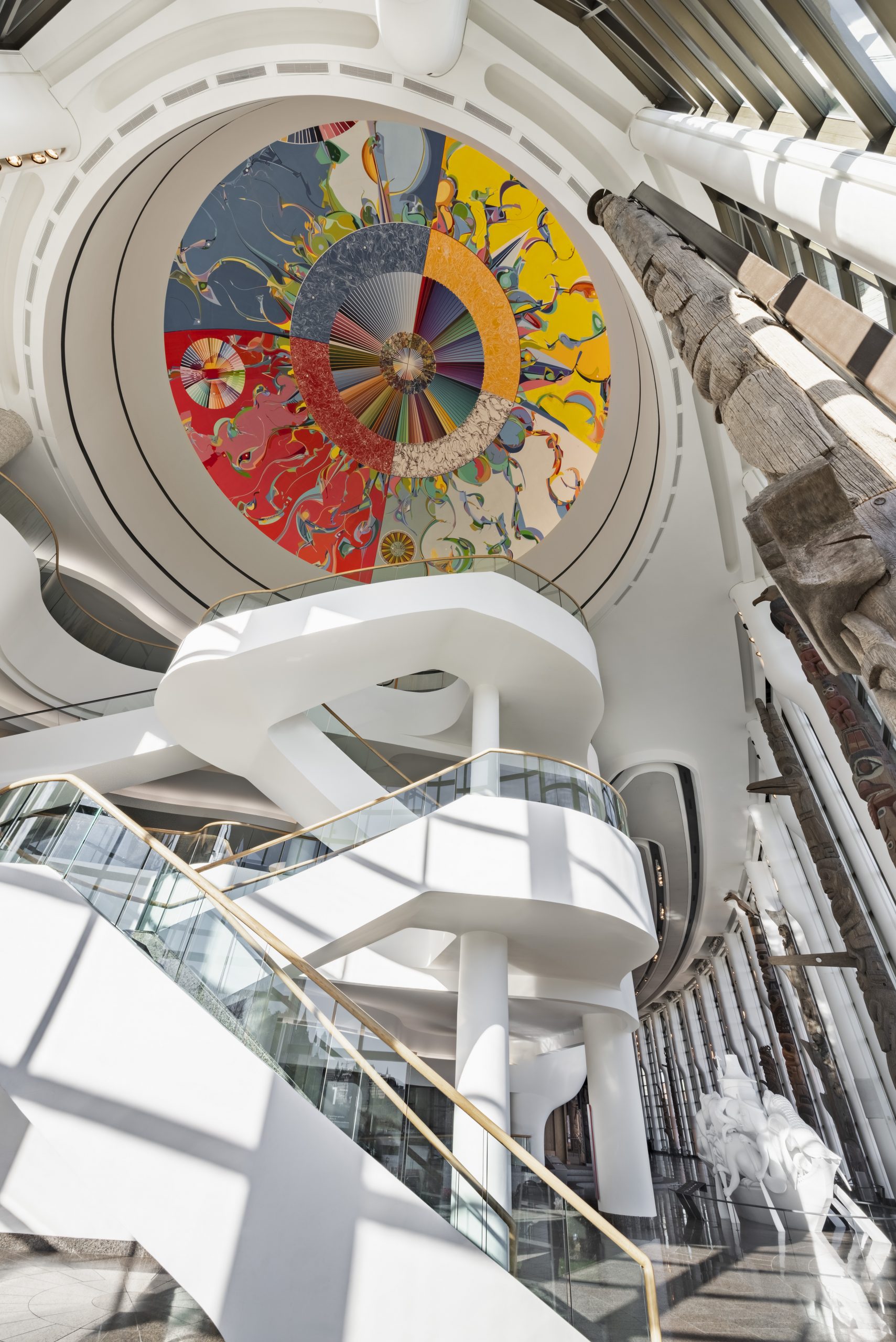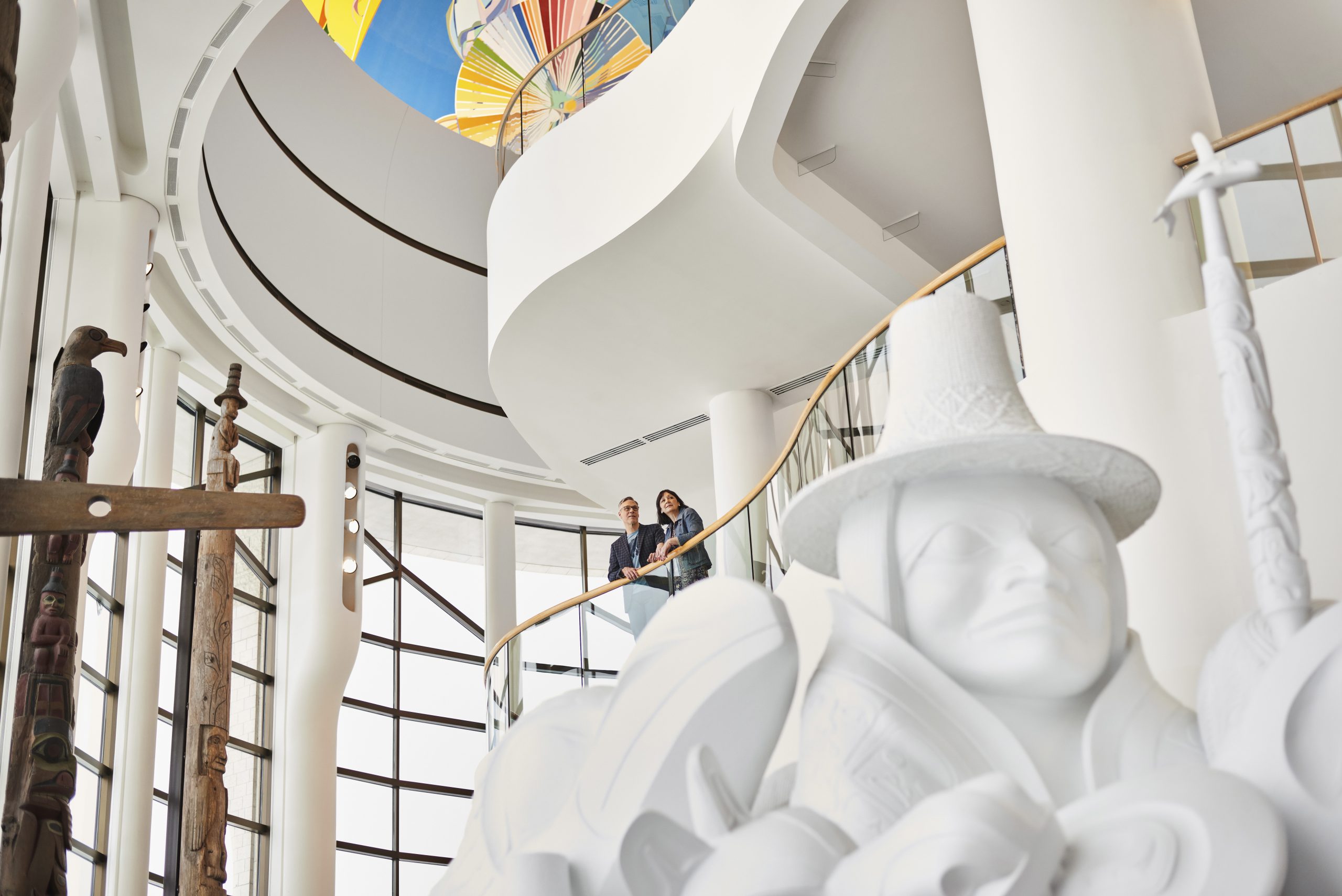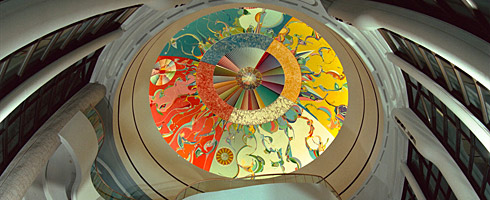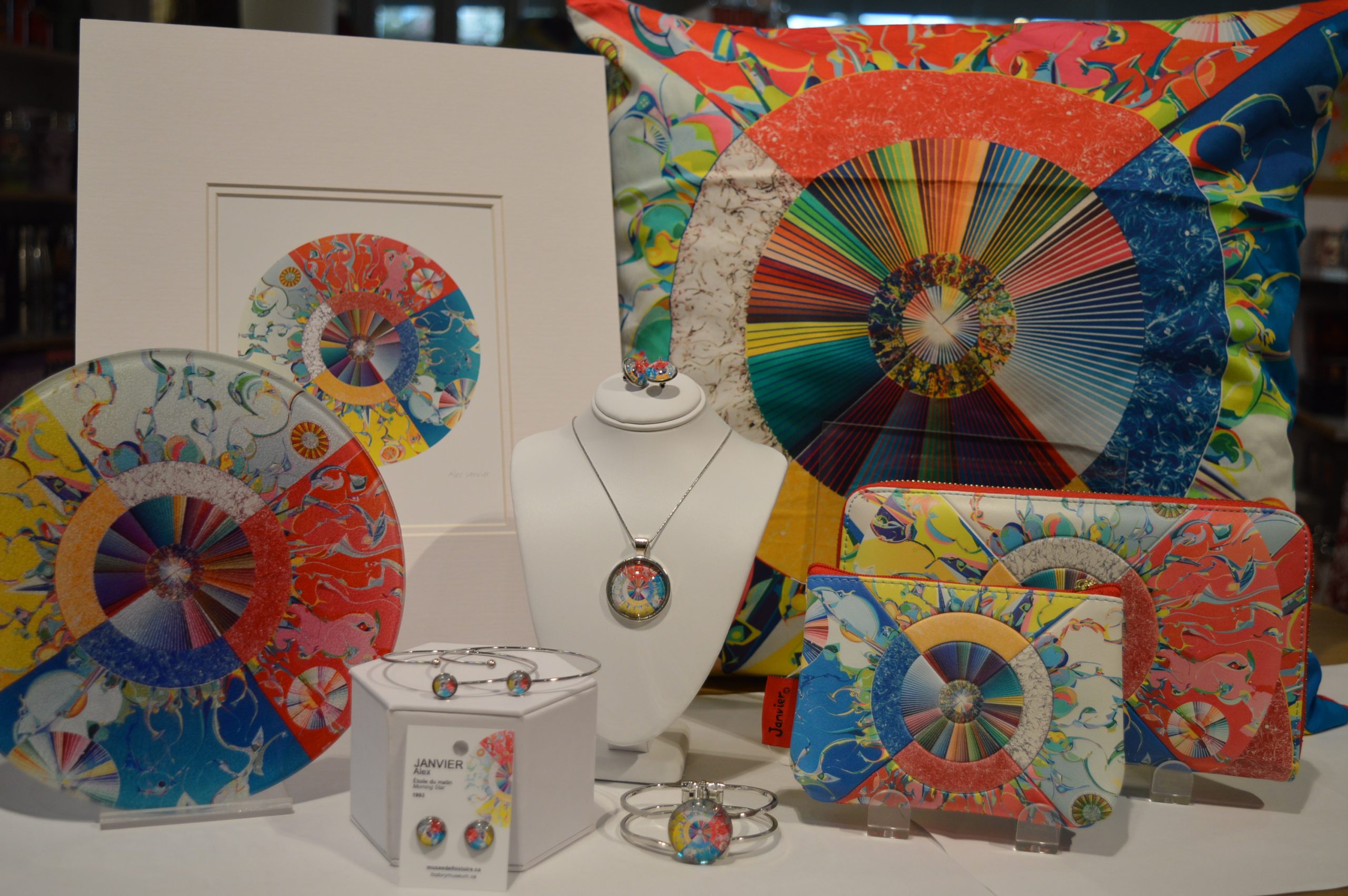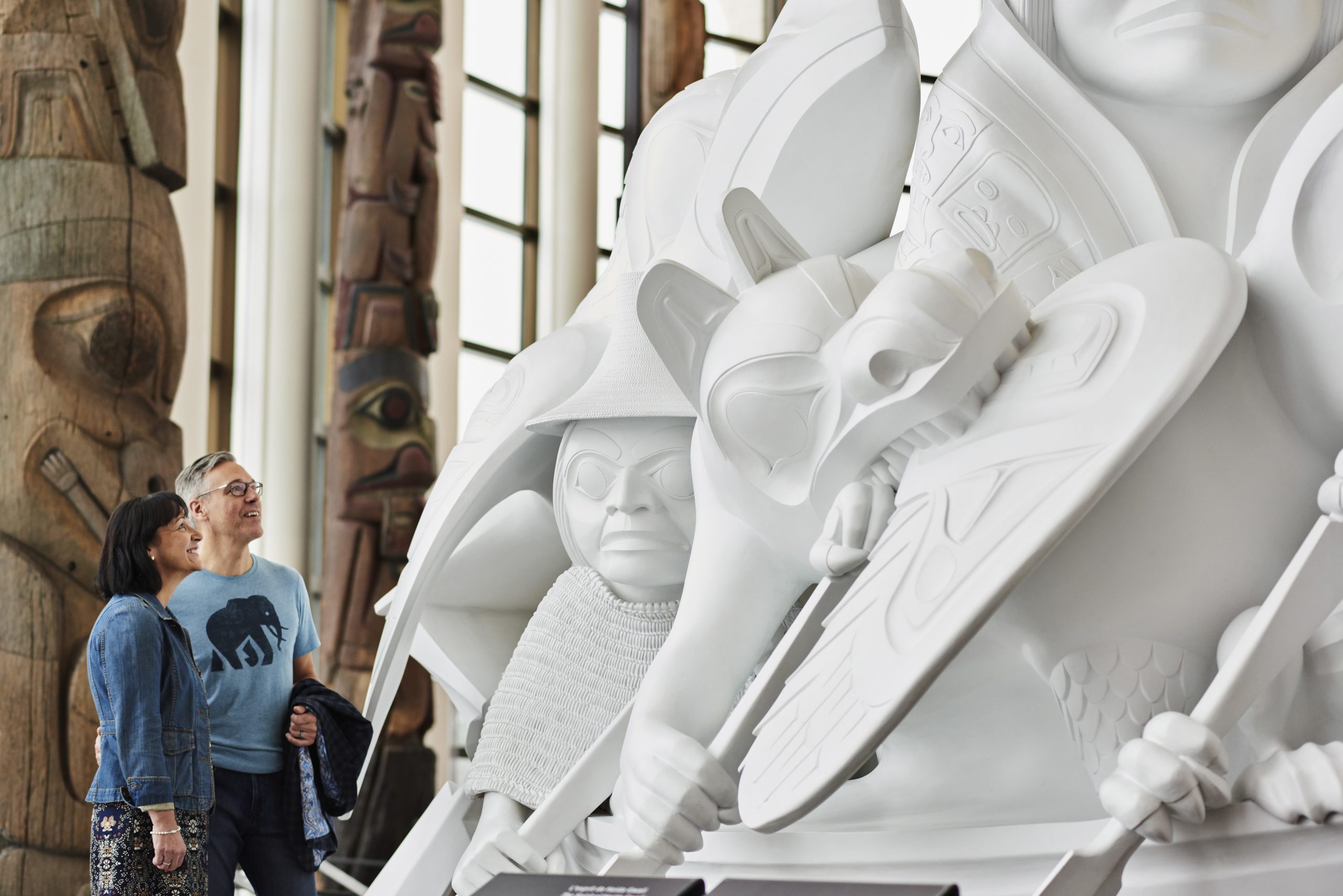Explore Indigenous ways of knowing and being in Alex Janvier’s monumental masterpiece
Painted in 1993 by renowned Dene Suline-Saulteaux artist Alex Janvier, assisted by his son Dean, Morning Star adorns a domed ceiling seven storeys above the floor of the Haida Gwaii Salon. Divided into four colourful quadrants, this monumental work illustrates the history of the land in which we live, while also expressing hope for mutual respect and reconciliation between Indigenous and European traditions.
Each of the quadrants represents a different period in Canadian history from an Indigenous perspective. The yellow quadrant reflects the period prior to European contact. Blue depicts contact and a time of turbulence. Red represents the beginnings of Indigenous revival. And white signifies healing and reconciliation.
To provide an optimal viewing experience, there are reclining seats in the Salon, allowing visitors to look up as they contemplate this masterpiece by one of the world’s best-known Indigenous artists.
Alex Janvier, Morning Star – Gambeh Then’
Alex Janvier’s brilliant 1993 painting adorns the domed ceiling seven stories above the Grand Hall.
Facts about Morning Star
About the artist
Alex Janvier (pronounced Jan-VEER) was a pioneer of the contemporary Indigenous art movement. A founding member of the “Indian Group of Seven,” he is known worldwide for dazzling abstract works combining line, shape, and bright symbolic colour.
Born in 1935 on Le Goff Reserve near Cold Lake, Alberta, Janvier was of Dene Suline and Saulteaux descent. Discovering his talent for art at residential school, he went on to formal training at university. By the late 1960s, Janvier and many of his fellow Indigenous artists had begun changing perceptions of contemporary Indigenous art, earning acclaim for their vibrant and thought-provoking work at home and abroad.
Janvier’s paintings have been exhibited around the world and are held in many private and public collections. He was a member of the Order of Canada and the Royal Canadian Academy of the Arts. His many other honours include a Governor General’s Award in Visual and Media Arts in 2008, and a Queen Elizabeth II Diamond Jubilee Medal in 2013.
Alex Janvier left the physical world on July 10, 2024.
Free admission for Indigenous Peoples
Admission to the Canadian Museum of History is always free for Indigenous Peoples, including First Nations, Inuit and Métis. Learn more about admission.
Image at top of page:
Alex Janvier, Morning Star – Gambeh Then’, detail, 1993, Canadian Museum of History VI-D-276
Photo: CMH/MCH
